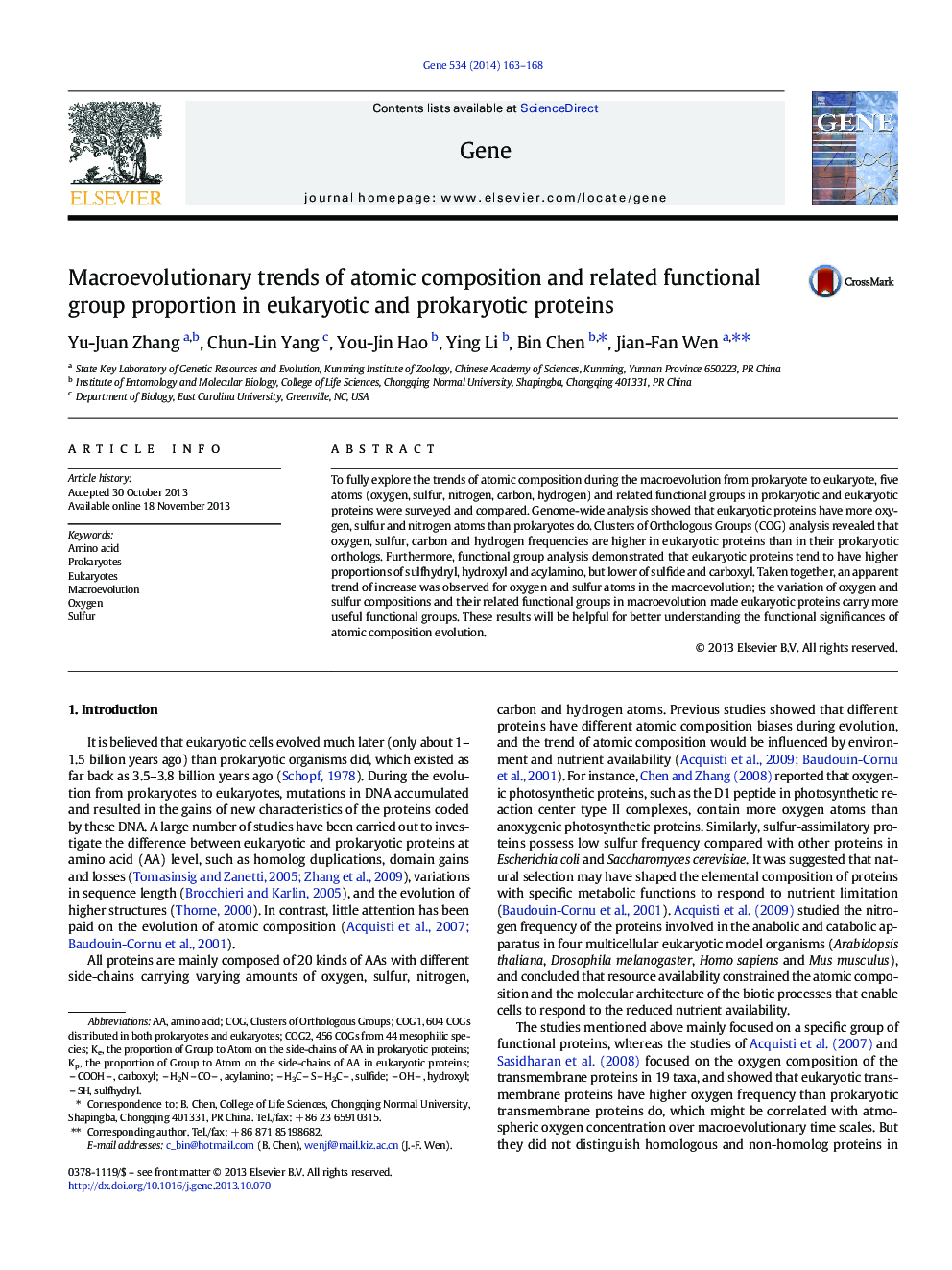| Article ID | Journal | Published Year | Pages | File Type |
|---|---|---|---|---|
| 5905988 | Gene | 2014 | 6 Pages |
Abstract
To fully explore the trends of atomic composition during the macroevolution from prokaryote to eukaryote, five atoms (oxygen, sulfur, nitrogen, carbon, hydrogen) and related functional groups in prokaryotic and eukaryotic proteins were surveyed and compared. Genome-wide analysis showed that eukaryotic proteins have more oxygen, sulfur and nitrogen atoms than prokaryotes do. Clusters of Orthologous Groups (COG) analysis revealed that oxygen, sulfur, carbon and hydrogen frequencies are higher in eukaryotic proteins than in their prokaryotic orthologs. Furthermore, functional group analysis demonstrated that eukaryotic proteins tend to have higher proportions of sulfhydryl, hydroxyl and acylamino, but lower of sulfide and carboxyl. Taken together, an apparent trend of increase was observed for oxygen and sulfur atoms in the macroevolution; the variation of oxygen and sulfur compositions and their related functional groups in macroevolution made eukaryotic proteins carry more useful functional groups. These results will be helpful for better understanding the functional significances of atomic composition evolution.
Keywords
Related Topics
Life Sciences
Biochemistry, Genetics and Molecular Biology
Genetics
Authors
Yu-Juan Zhang, Chun-Lin Yang, You-Jin Hao, Ying Li, Bin Chen, Jian-Fan Wen,
